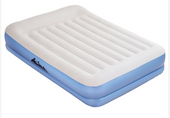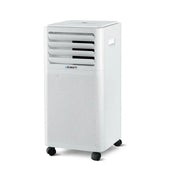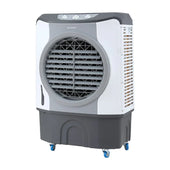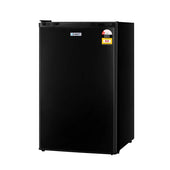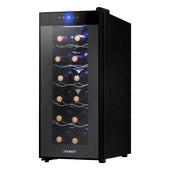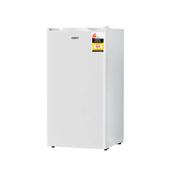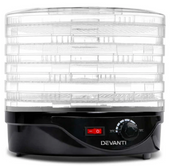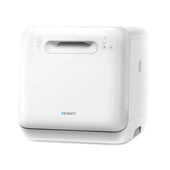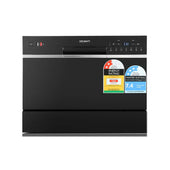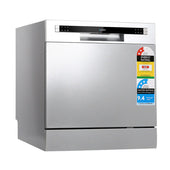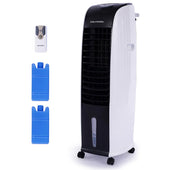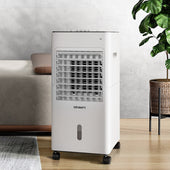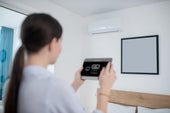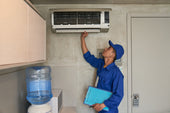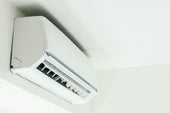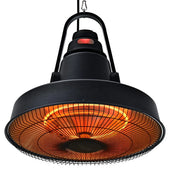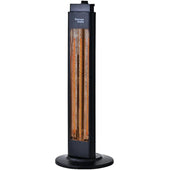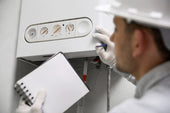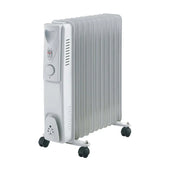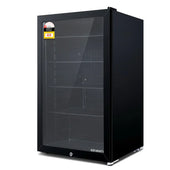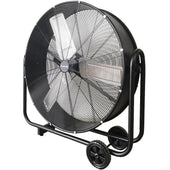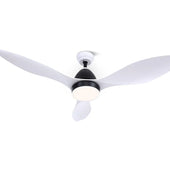Understanding Laptop Battery Basics: How It Works
Laptop batteries are typically lithium-ion or lithium-polymer, designed to store energy efficiently and discharge it to power the device. These batteries rely on chemical reactions, where lithium ions move between electrodes during charging and discharging phases. This process allows laptops to function without being tethered to a power source.
Key components include:
- Cells: Individual units within the battery that store and deliver energy.
- Circuitry: Manages power flow, ensuring safety and efficiency.
- Capacity: Measured in watt-hours (Wh), indicating how long the battery can run.
Factors such as ambient temperature, charging cycles, and usage habits can significantly impact battery performance. Understanding these aspects is crucial for optimising longevity and functionality. Battery management systems are essential for regulating voltage and protecting against overcharging or overheating.
The Impact of Software on Battery Performance
Software running on a laptop significantly influences its battery consumption. Applications with high processing demands, such as video editing tools or complex simulations, require greater CPU and GPU usage, draining the battery at an accelerated rate. Background processes, including auto-updating software or frequently synchronising cloud services, can also contribute to battery depletion During Days without the user's knowledge.
Operating systems play a pivotal role, as their resource management efficiencies directly control energy usage. For example, systems optimised for power-saving modes reduce unnecessary processing. Additionally, poorly coded or outdated software may utilise hardware inefficiently, leading to greater energy draw. Users can mitigate this issue by closing unused applications and keeping software updated for improved optimisation.
Optimising Your OS Settings for Longer Battery Life
Efficient OS settings can significantly extend laptop battery life. Start by enabling power-saving modes via the system’s control panel. On Windows, activate 'Battery Saver'; macOS users can utilise 'Energy Saver' with optimised settings, while Linux offers tools like TLP or Powertop.
Disable unnecessary background apps and services by reviewing startup programs and processes. Brightness and timeout settings are equally vital; reduce screen brightness and configure the display to turn off quickly during inactivity.
Adjust network settings by disconnecting unused wireless connections, disabling Bluetooth when not in use, and limiting system updates to charging periods. Finally, utilise scheduled maintenance for updates and backups outside peak usage times.
Essential Hardware Tips to Improve Performance and Longevity
Proper hardware maintenance is crucial for enhancing laptop performance and preserving its lifespan. Regularly cleaning the laptop’s vents and fans prevents dust accumulation, ensuring effective heat dissipation. Avoid placing devices on soft surfaces like beds, which can obstruct airflow and result in overheating.
Upgrading components, such as replacing a hard drive with a solid-state drive (SSD), can significantly boost speed. Similarly, installing additional RAM enhances multitasking capabilities. Battery care is also vital; adhering to optimal charging practices can prolong battery life.
Protecting the laptop from physical damage with a robust case and avoiding humidity ensures durability. Employing these strategies maintains peak performance over time.
Choosing the Right Power Plan: Balanced vs High Performance vs Power Saver
Selecting the appropriate power plan can significantly impact both battery life and laptop performance. Each power plan is tailored to suit different usage needs.
- Balanced Power Plan: This option prioritises a mix of battery efficiency and performance. It adjusts power use based on current tasks, making it ideal for everyday use without compromising much on speed.
- High Performance Power Plan: Designed for demanding scenarios, such as gaming or video editing, this plan maximises performance by using more energy. However, it may drain the battery faster.
- Power Saver Power Plan: This plan extends battery life by minimising energy consumption. It reduces processing speed and dims display brightness, making it suitable for lightweight tasks like browsing or reading.
Switching plans manually or setting scheduled presets can help optimise battery life without sacrificing functionality.
Maintaining Your Laptop Battery: Do’s and Don’ts
Do’s
- Keep charging between 20% and 80%: Regularly keeping the charge level in this range helps minimise degradation and prolong battery lifespan.
- Use the manufacturer’s charger: Original chargers ensure compatibility and prevent overcharging or overheating.
- Enable battery-saving settings: These configurations optimise system performance and reduce unnecessary power drain.
- Store at room temperature: Extreme heat or cold can damage the battery permanently.
- Calibrate the battery occasionally: Fully charge and discharge the battery every few months to maintain accurate capacity readings.
Don’ts
- Avoid frequent full discharges: Fully draining the battery often can cause wear.
- Don’t keep plugged in 24/7: Consistently overcharging can lead to overheating and faster deterioration.
- Avoid third-party chargers: Unverified chargers may strain the battery or cause unsafe power supply issues.
- Never expose to direct sunlight: Prolonged heat exposure reduces battery efficiency.
- Don’t ignore software updates: Outdated systems may not be optimised for power management.
Managing Background Applications and Startup Processes
Background applications and startup processes often drain laptop battery and impact performance. By identifying and disabling unnecessary programs, users can optimise resource allocation effectively.
Steps to Manage Background Applications:
- Identify Running Processes: Utilise the task manager or activity monitor to see which applications consume resources.
- Close Unnecessary Apps: Terminate non-essential processes that run in the background.
- Adjust Settings: Configure apps to stop running automatically in the background via privacy or app settings.
Optimising Startup Processes:
- Open Startup Manager: Access the system settings to review startup processes.
- Disable Redundant Apps: Turn off software not required when the laptop boots up, improving both battery life and boot speed.
Best Practices for Charging Your Laptop Battery Efficiently
- Avoid Overcharging: Ensure the laptop is unplugged once the battery reaches full capacity to prevent overheating or battery strain. Most modern laptops feature automatic cut-offs, but manual monitoring is prudent.
- Charge in Moderate Cycles: Charge the battery when it drops to around 20% and disconnect it at 80–90%. This partial charging helps preserve lithium-ion batteries’ lifespan.
- Use Original Chargers: Always utilise the manufacturer-provided charger to maintain compatibility and ensure stable power delivery.
- Keep in Ideal Temperature: Charge the laptop in environments between 10°C and 30°C, as extreme temperatures can negatively impact charging efficiency.
- Enable Battery Care Modes: If available, activate software settings designed to optimise charging cycles and limit unnecessary wear on the battery.
The Role of Updates: Keeping Your Software and Drivers Up-to-Date
Regular updates to software and drivers play a crucial role in enhancing a laptop’s battery life and overall performance. These updates often include optimisations that reduce energy consumption, improve system stability, and address compatibility issues. Neglecting updates can lead to outdated software consuming power inefficiently or even causing glitches that drain the battery.
- Operating System Updates: Critical patches frequently optimise resource usage, ensuring the laptop runs efficiently.
- Driver Updates: Updated drivers fine-tune hardware functions, improving power management capacities.
- App Updates: Enhanced versions of software often include power-saving features and bug fixes.
By enabling automatic updates or routinely checking manually, users can maintain optimal software and hardware efficiency seamlessly.
Advanced Tips: Battery Calibration and BIOS Configuration
Proper battery calibration ensures accurate performance readings. Users can perform this by charging the battery fully, then draining it completely through usage, and recharging to 100%. This recalibration helps reset the power gauge for accuracy.
Adjusting BIOS settings impacts battery efficiency. Users should access the BIOS (often via a boot key, such as F2 or Del) and enable energy-saving features like adaptive thermal management or CPU throttling. Disabling unused peripherals like LAN or USB ports in BIOS reduces power draw.
Periodic calibration and BIOS tweaks maximise battery longevity. Transitioning between different settings allows users to tailor their laptop’s power efficiency to their specific needs.
Keeping Your Laptop Cool: Thermal Throttling and Its Effect on Battery
Thermal throttling occurs when a laptop's processor reduces its performance to prevent overheating. Excessive heat can arise from resource-intensive tasks, poor ventilation, or a clogged cooling system. This throttling impacts overall device performance and contributes to faster battery depletion, as the processor struggles under heat stress and demands more power.
Factors Contributing to Thermal Issues:
- Blocked Air Vents: Dust accumulation can obstruct airflow, causing heat build-up.
- Background Processes: Intensive applications running simultaneously increase thermal load.
- Faulty Fans: Inefficient cooling due to ageing or malfunctioning fans.
Tips for Managing Heat and Prolonging Battery:
- Optimise Settings: Lower screen brightness and disable unneeded apps.
- Enhance Ventilation: Use a laptop stand or cooling pad for better airflow.
- Regular Maintenance: Clean vents and fans to prevent dust accumulation.
Proper thermal management extends battery longevity and ensures consistent laptop performance.
The Importance of Sleep and Hibernate Modes
Effective utilisation of sleep and hibernate modes can significantly improve laptop battery life while protecting performance. Sleep mode places the laptop in a low-power state, keeping applications and documents active in memory. This mode is ideal for short breaks as it allows users to resume tasks quickly while conserving energy.
In contrast, hibernate mode saves all open work to the hard disk and then fully powers down the device. It consumes no power and is highly beneficial for extended periods of inactivity.
- Sleep mode: Best suited for brief interruptions.
- Hibernate mode: An excellent choice for prolonged downtime, reducing energy use further.
Switching between these modes based on usage can efficiently optimise battery performance.
Using External Tools or Software to Monitor Battery Health
Monitoring battery health is essential for optimising its performance and longevity, and external tools or software can assist in providing detailed insights. These utilities often display essential metrics such as charge cycles, temperature, capacity, and internal resistance. Users may consider tools like BatteryCare, HWMonitor, or CoconutBattery for comprehensive battery diagnostics.
Some programmes generate real-time statistics, enabling users to identify issues like overheating or capacity degradation. Advanced options may allow customisation of charging thresholds to prevent overcharging. Choosing software with user-friendly interfaces ensures effortless navigation and quick interpretation of battery data. Such tools can complement built-in system utilities to enhance overall monitoring.
How Peripheral Devices Can Drain Your Laptop Battery
External peripherals connected to a laptop can significantly impact its battery life, often drawing power continuously. Devices such as USB flash drives, external hard drives, webcams, and other accessories consume energy to function. USB ports, in particular, deliver constant power to devices even when not actively in use.
Wireless peripherals like Bluetooth mice or keyboards also drain the battery due to their need for a stable connection. Additionally, portable monitors and docking stations require higher energy input, further taxing the laptop’s battery. Using peripherals without disconnecting or disabling them when idle results in unnecessary consumption, reducing the overall battery lifespan.
Replacing a Dying Battery: When and How to Do It
A laptop battery’s lifespan typically ranges from two to four years, depending on usage patterns and care. Signs of a failing battery include sudden shutdowns, significantly reduced runtime, overheating, or an inability to hold charge. It is crucial to replace the battery promptly to prevent damage to the laptop’s internal components.
Steps to Replace a Battery:
- Identify Compatibility: Verify the model and the compatible replacement battery by checking the manufacturer’s website or documentation.
- Purchase the Battery: Source the replacement from authorised dealers or trusted sources to ensure authenticity and quality.
- Prepare the Device: Power off the laptop completely and disconnect it from any power sources.
- Locate the Battery: Refer to the manual to identify the access point (external latch or internal compartment).
- Install the Replacement: Remove the old battery carefully and secure the new battery, ensuring proper alignment.
Regular replacements ensure reliable performance.
Final Thoughts: Building Sustainable Habits for Laptop Care
Establishing sustainable habits to maintain laptop performance and battery life is essential for prolonging its lifespan. Users should consistently moderate screen brightness, deactivate unused applications, and manage background processes to conserve energy. Regular software updates ensure optimal system performance and security, while maintaining the physical condition of the laptop, such as cleaning vents and keeping it in a dust-free zone, significantly reduces overheating risks.
Steps to integrate habits:
- Monitor battery health: Use built-in tools or third-party apps for calibration.
- Unplug chargers appropriately: Avoid overcharging and use original adapters only.
- Optimise storage use: Regularly free up disk space to prevent lag.
By reinforcing mindful practices, the laptop remains efficient and reliable for long-term use.










